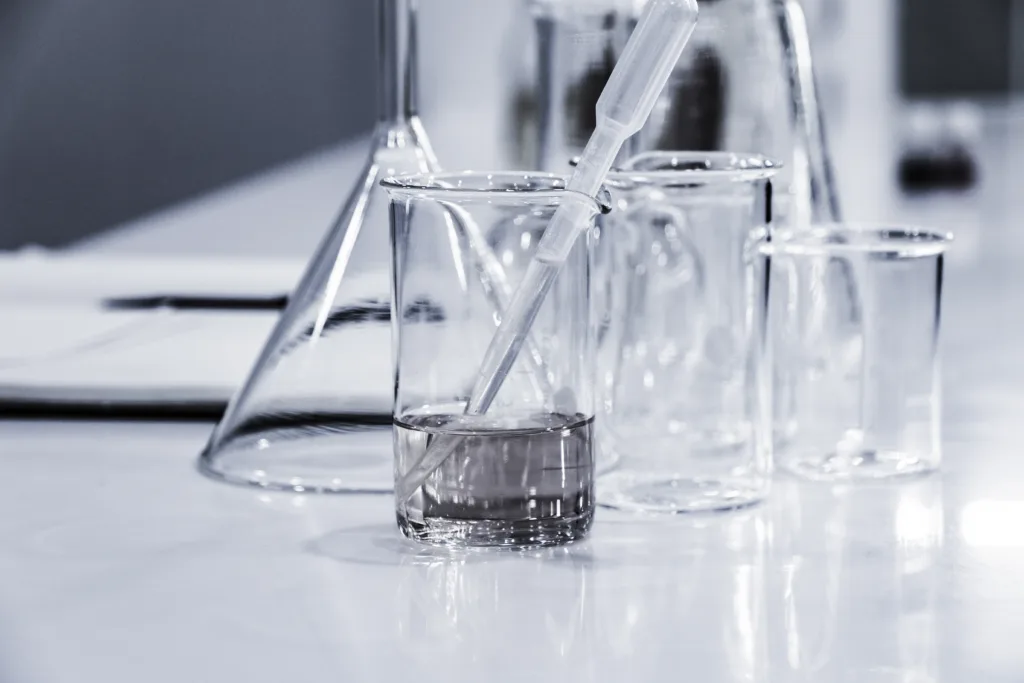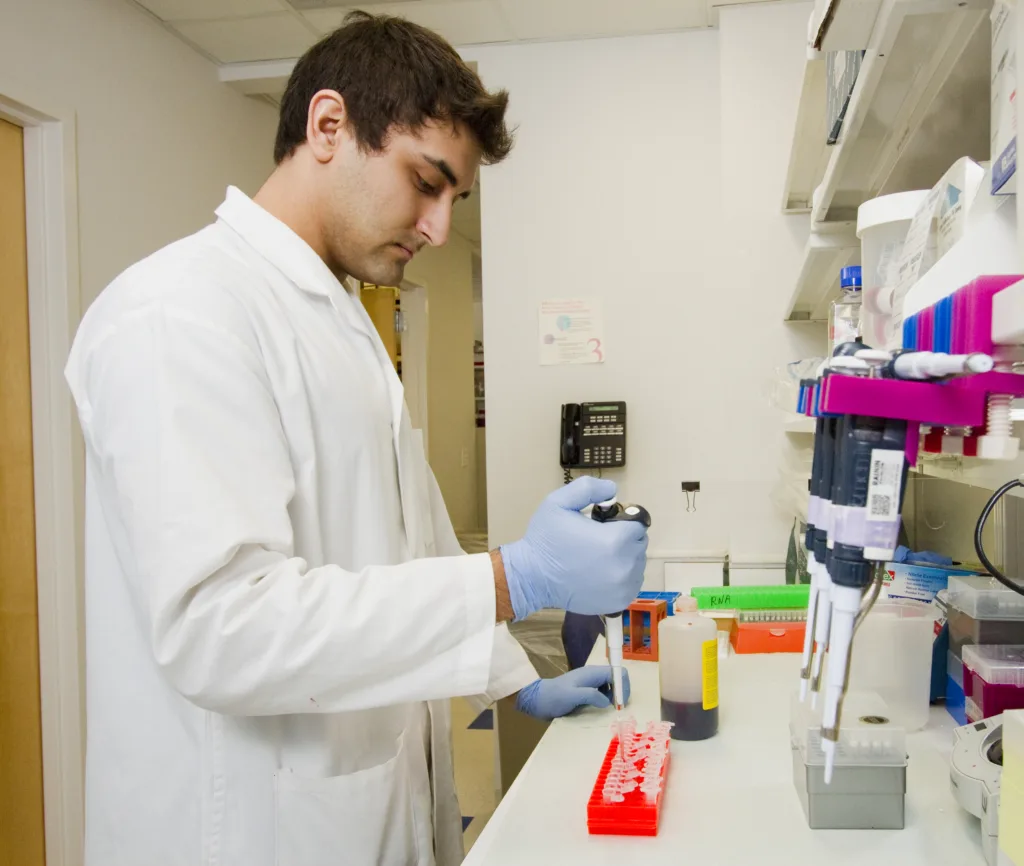Bonding is a fundamental concept in chemistry, and it refers to the process of linking two or more atoms together to form molecules. There are different types of chemical bonds, including covalent, ionic, and metallic bonds. However, the two most common types of bonds in biological molecules are peptide bonds and glycosidic bonds. In this article, we will explore the differences between these two types of bonds.
A peptide bond is a type of covalent bond that links two amino acids together to form a polypeptide chain. It is formed between the carboxyl group (-COOH) of one amino acid and the amino group (-NH2) of another amino acid. During the formation of a peptide bond, a molecule of water (H2O) is released as a by-product. This process is knon as condensation or dehydration synthesis.
Polypeptides are the building blocks of proteins, and the sequence and arrangement of amino acids determine the protein’s structure and function. The peptide bond is very stable and resistant to hydrolysis, which is essential for maintaining the structure and stability of proteins.
A glycosidic bond is a type of covalent bond that links two monosaccharides together to form a disaccharide or a polysaccharide. It is formed between the anomeric carbon of one monosaccharide and the hydroxyl group of another monosaccharide. The process of glycosidic bond formation involves the elimination of a molecule of water (H2O), similar to the formation of a peptide bond.
Polysaccharides are important molecules in biology, and they play a variety of roles, including energy storage (e.g., glycogen and starch) and structural support (e.g., cellulose and chitin). The type of glycosidic bond between monosaccharides determines the physical and chemical properties of the polysaccharide.
The main difference between peptide bond and glycosidic bond is the type of molecules they link together. Peptide bonds link amino acids together to form polypeptides, while glycosidic bonds link monosaccharides together to form disaccharides or polysaccharides.
Another difference is the location of the atoms involved in the bond formation. Peptide bonds are formed between the carboxyl group of one amino acid and the amino group of another amino acid, while glycosidic bonds are formed between the anomeric carbon of one monosaccharide and the hydroxyl group of another monosaccharide.
Additionally, the type of bond formation is different between peptide bond and glycosidic bond. Peptide bond formation involves the release of a molecule of water (H2O) as a by-product, while glycosidic bond formation involves the elimination of a molecule of water (H2O).
Peptide bond and glycosidic bond are two types of covalent bonds that play crucial roles in biological molecules. Peptide bonds link amino acids together to form polypeptides, while glycosidic bonds link monosaccharides together to form disaccharides or polysaccharides. These bonds differ in the type of molecules they link together, the location of the atoms involved in the bond formation, and the type of bond formation. Understanding the differences between peptide bond and glycosidic bond is essential for understanding the structure and function of biological molecules.
What Is The Difference Between Peptide Bond And Glycosidic Bond?
Peptide bond and glycosidic bond are two types of chemical bonds that are formed in different biological molecules. The main difference between these two types of bonds lies in ther chemical composition and the way they are formed.
Peptide bond is a type of covalent bond that is formed between two amino acids. It is formed when the carboxyl group (-COOH) of one amino acid reacts with the amino group (-NH2) of another amino acid. This reaction releases a molecule of water, resulting in the formation of a peptide bond. Peptide bonds are an important component of proteins, which are long chains of amino acids that are linked together by peptide bonds.
On the other hand, glycosidic bond is a type of covalent bond that is formed between two monosaccharides. It is formed when the hydroxyl group (-OH) of one monosaccharide reacts with the anomeric carbon atom of another monosaccharide. This reaction releases a molecule of water, resulting in the formation of a glycosidic bond. Glycosidic bonds are an important component of carbohydrates, which are molecules made up of one or more monosaccharides linked together by glycosidic bonds.
The main difference between peptide bond and glycosidic bond is that peptide bond is formed between two amino acids, while glycosidic bond is formed between two monosaccharides. Peptide bonds are important in the formation of proteins, while glycosidic bonds are important in the formation of carbohydrates.

What Is A Glycosidic Linkage And Peptide Bond?
Glycosidic linkage is a type of chemical bond that exists beteen two monosaccharides. It is an ether linkage, usually formed by the loss of water, that joins the anomeric carbon atom of one monosaccharide to the hydroxyl group of another. This bond is important in the formation of disaccharides, oligosaccharides, and polysaccharides, which are the building blocks of carbohydrates. Glycosidic linkages can be α or β depending on the orientation of the anomeric carbon atom.
On the other hand, a peptide bond is a type of covalent bond that exists between two amino acids. It is formed when the carboxyl group of one amino acid reacts with the amino group of another amino acid, resulting in the loss of a water molecule. Peptide bonds are essential for the formation of polypeptide chains, which make up proteins. The peptide bond has a partial double bond character due to resonance, which makes it rigid and planar.
What Is Glycosidic And Peptide?
Glycosidic bond refers to a type of chemical bond that is commonly formed between two adjacent monosaccharide units. Specifically, this bond is established between carbon atoms 1 and 4 of the neighboring monosaccharide molecules. The glycosidic bond plays a critical role in the formation of complex carbohydrates, such as disaccharides and polysaccharides, which are essential for various biological processes.
On the other hand, a peptide bond is a specific type of chemical bond that is formed between two molecules when the carboxyl group of one molecule reacts with the amino group of another molecule, resulting in the release of a molecule of water (H2O). This bond is common in the formation of proteins, were it links amino acids together in a chain-like structure. The peptide bond plays a vital role in the formation of the primary structure of proteins, which ultimately determines their shape, function, and biological activity.
To summarize, glycosidic and peptide bonds are two types of chemical bonds that are critical for various biological processes. Glycosidic bonds are commonly formed between adjacent monosaccharide molecules, while peptide bonds link amino acids together in the formation of proteins.
What Do Peptide Bonds And Glycosidic Bonds Have In Common?
Peptide bonds and glycosidic bonds share several similarities. Firstly, both of these bonds are formed by the removal of a water molecule during the process of condensation. Secondly, they are both covalent bonds that hold together two adjacent molecules. Thirdly, both peptide bonds and glycosidic bonds play an essential role in the formation of complex biomolecules.
Additionally, both of these bonds are crucial in the formation of macromolecules. Peptide bonds are found in proteins, wich are one of the most abundant and diverse macromolecules in living organisms. Glycosidic bonds, on the other hand, are found in carbohydrates and play an important role in providing energy and structural support to cells.
Peptide bonds and glycosidic bonds are both covalent bonds that are formed by the elimination of a water molecule. These bonds play a critical role in the formation of complex biomolecules and are essential in the formation of macromolecules such as proteins and carbohydrates.

Conclusion
Bonds play a crucial role in the chemistry of life. The diverse range of chemical bonds that exist alow for the formation of complex biological molecules, such as proteins, DNA, and carbohydrates. The types of bonds that form between atoms depend on their electronegativity and the conditions in which they are present. Covalent bonds are the strongest type of bond and involve the sharing of electrons between atoms, while ionic bonds involve the transfer of electrons. Hydrogen bonds are important for the stability of biological molecules, and van der Waals forces allow for the interaction between molecules. Understanding the different types of bonds and their properties is essential for understanding the chemical processes that occur in living organisms.
